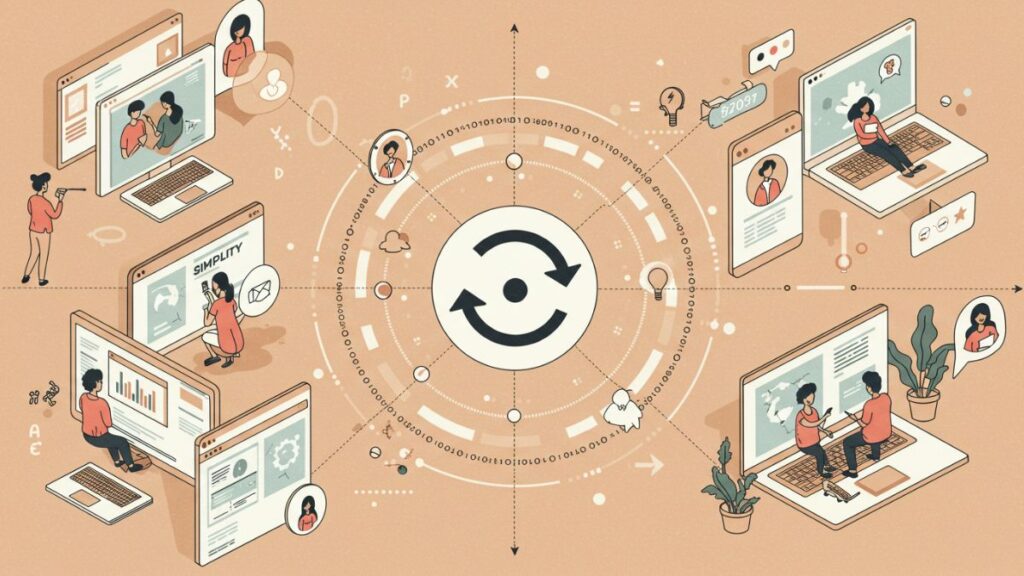One such phenomenon is simpcitt a term that has sparked both intrigue and debate among users across various platforms. But what exactly does it mean? Why has it gained traction? Understanding simpcitt goes beyond mere definitions; it’s about exploring how this concept influences everything from social dynamics to communication styles. Join us as we delve into the fascinating world of simpcitts, uncovering its rise in online communities and its far-reaching effects on modern culture.
The Rise of Simpcitt in Online Communities
Simpcitt has gained significant traction within online communities, surfacing as a distinct cultural phenomenon. It represents an evolution of social interaction, where users express admiration or affection, often in exaggerated forms.
This trend thrives especially on platforms like Twitter and TikTok. Users engage with one another through memes and posts that showcase their devotion to certain interests or personalities. It’s a way of bonding over shared passions.
Many individuals find comfort in simpcitts openness. It allows for vulnerability and emotional expression that was once stigmatized. The community aspect fosters inclusivity, making it easier for people to connect across various backgrounds.
As more users adopt this language of adoration, its influence extends beyond casual chats into deeper discussions about relationships and identity. This shift is reshaping how we perceive our interactions online.
The Effects of Simpcitt on Online Culture
Simpcitt has woven itself into the fabric of online culture, influencing interactions across various platforms. It represents a shift in how people express admiration and affection, often blurring the lines between genuine appreciation and obsession.
This phenomenon encourages vulnerability among users. Sharing personal experiences and emotions becomes more common as individuals seek connection through their simpcitts tendencies.
Moreover, it fosters communities that celebrate both humor and support. Memes related to simpcitt circulate widely, creating shared language that resonates with diverse audiences.
However, this trend also cultivates a paradoxical environment where self-worth is often tied to digital validation. Users may feel pressured to conform to certain expectations or engage in performative behaviors that align with simpcitts culture.
These dynamics shape not just individual identities but also collective norms within online spaces.
How Has Simpcitt Changed the Way We Communicate Online?
Simpcitt has transformed online communication in profound ways. It’s not just a trend; it’s a cultural shift. Users express emotions more freely, often blurring the lines between humor and sincerity.
Social media platforms now host interactions that are layered with irony and vulnerability. The language of simpcitt encourages people to engage openly, sharing their feelings without fear of judgment. This openness fosters deeper connections among users.
Moreover, memes have become a significant vehicle for this communication style. They carry messages packed with emotion while remaining light-hearted. People relate through shared experiences depicted in these humorous formats.
Interestingly, simpcitts impacts the dynamics of influence as well. Supporters often rally around content creators who embody its principles. This creates communities based on mutual appreciation rather than traditional hierarchies.
In essence, simpcitt redefines how we interact online by cultivating an environment where empathy meets entertainment seamlessly.
Criticisms and Controversies Surrounding Simpcitt
Simpcitt has sparked significant debate within online spaces. Critics argue that it promotes unhealthy behaviors, particularly in relationships. The idea of “simping” often blurs the line between admiration and obsession.
Many believe simpcitt encourages a culture where individuals place unrealistic expectations on others. It may lead to emotional dependency or reinforce harmful stereotypes about gender dynamics. This aspect raises eyebrows among mental health advocates who caution against such mindsets.
Moreover, some communities have taken a stand against simpcitts as toxic masculinity disguised as affection. They highlight how this behavior can perpetuate negative social norms instead of fostering genuine connections.
Controversies also arise regarding its impact on content creation. Influencers leveraging simpcitt might skew perceptions for profit rather than authenticity, leading to mistrust among followers seeking real interactions. This duality fuels ongoing discussions across forums and social media platforms worldwide.
Conclusion:
Simpcitt has undeniably woven itself into the fabric of online communities. Its influence stretches across various platforms, shaping how users interact and express their thoughts.
As we navigate this landscape, it’s clear that simpcitts is more than just a trend. It’s a reflection of evolving communication styles and cultural shifts.
The dialogues sparked by simpcitt reveal deeper underlying sentiments about relationships, identity, and belonging in the digital age.
FAQ’S
What is simpcitt?
Simpcitt refers to a trend within online communities where individuals often showcase overly supportive or submissive behavior towards others, particularly in romantic or platonic contexts. It emphasizes admiration and sometimes idolization, which can lead to both positive and negative dynamics.
Why has simpcitt become popular?
The rise of social media platforms has allowed for greater interaction among users. This interconnectedness fosters environments where expressions of affection and support are amplified. Many find joy in sharing their admiration openly, contributing to the popularity of simpcitt.
How does simpcitt affect communication styles online?
Simpcitt influences how people express themselves on various platforms. Users may adopt a more casual, flirty style that blurs traditional boundaries between friendships and relationships. This shift affects everything from comments sections to direct messages.


